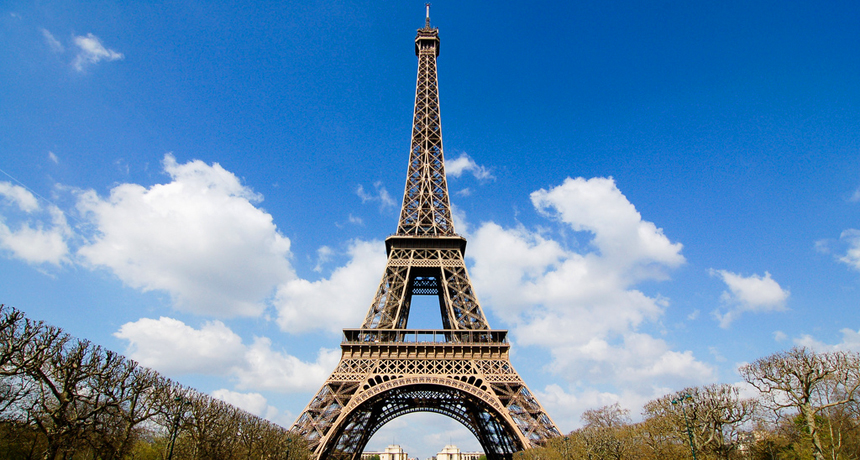Questions for How Science Saved the Eiffel Tower

longfellowelizabeth/FLICKR (CC BY-SA 2.0)
SCIENCE
Before reading
1. The Eiffel Tower in Paris is tall — but it’s also strong and light for its height. What do you think gives it that mix of qualities?
2. Scientists often go to great heights to measure weather conditions. Why do you think that is so important to do?
During reading
1. For whom is the Eiffel Tower named?
2. What world record did the Eiffel Tower break the day it opened?
3. How temporary was the Eiffel Tower meant to be?
4. What strategy did Gustave Eiffel develop to save his tower?
5. Explain some of the early scientific measurements made using instruments mounted on the Eiffel Tower.
6. Define “aerodynamics.”
7. Describe the important finding Eiffel confirmed about aerodynamics.
8. Where were some of the early wireless transmissions from the Tower received?
9. Who was “Operative H-21?”
10. What other famous structure did Gustave Eiffel help create?
After reading
1. Iron and steel began to be used throughout the 1800s to construct buildings and other structures. What advantages did these materials have? What sorts of structures could be built for the first time?
2. Brainstorm with a partner a list of buildings, bridges or other structures in your community that are built wholly or partially using iron or steel.
MATHEMATICS
1. San Francisco, Calif., lies at approximately 122 degrees west longitude. Washington, D.C., lies at approximately 77 degrees west. How many degrees separate the two cities? Using that knowledge, calculate the time in San Francisco when it is noon in Washington, D.C.